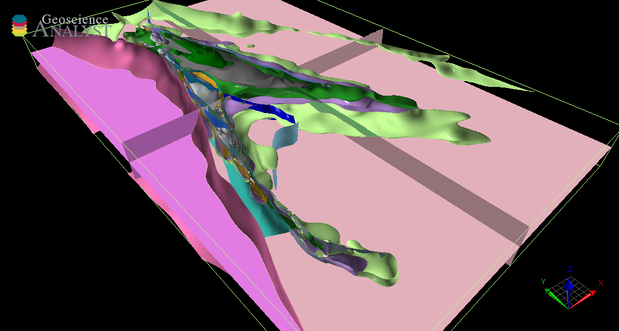
This model was built as part of a detailed mineralization study of the Archean gold deposits within the Agnew Gold Camp carried out by the Centre for Exploration Targeting (CET). A field investigation delineated the structural framework and paragenesis associated with the mineralization of each of the individual deposits at Songvang, Crusader, Waroonga and New Holland – Genesis.
The Lawlers Anticline is located in the southwest corner of the Agnew–Wiluna belt in the Kalgoorlie Terrane, which is part of the Eastern Goldfields Superterrane of the Yilgarn Craton. It consists of a moderately to tightly folded greenstone belt bounded to the west by the Waroonga Shear Zone, a 2 km-wide, dextral strike-slip zone separating the greenstones from a granite–gneiss terrain. The Lawlers Anticline plunges 50–60° to the north in the core of the Agnew Gold Camp, and formed as a result of a regional east–west contraction event. On the western limb of the Lawlers Anticline, the contact with metasedimentary rocks of the Scotty Creek Formation is faulted along the north- to northeast-trending Emu Shear Zone, which hosts, or is close to, the majority of existing high-grade gold deposits.
Mineralization in each of the deposits is associated with vastly different alteration styles. The Crusader deposit has magnetite-rich quartz and sulfide-poor gold mineralization. Songvang has gold- and silver-rich mineralization associated with biotite–fluorite–amphibole–chalcopyrite, whereas alteration in the New Holland – Genesis and Waroonga deposits is associated with quartz–arsenopyrite–pyrite–biotite–amphibole. Studies suggest that mineralization occurred during two distinct events — Songvang and Crusader developed early in the folding history, whereas Waroonga and New Holland – Genesis developed during a second mineralization event.
For further information contact:
3D.geoscience@dmirs.wa.gov.au
